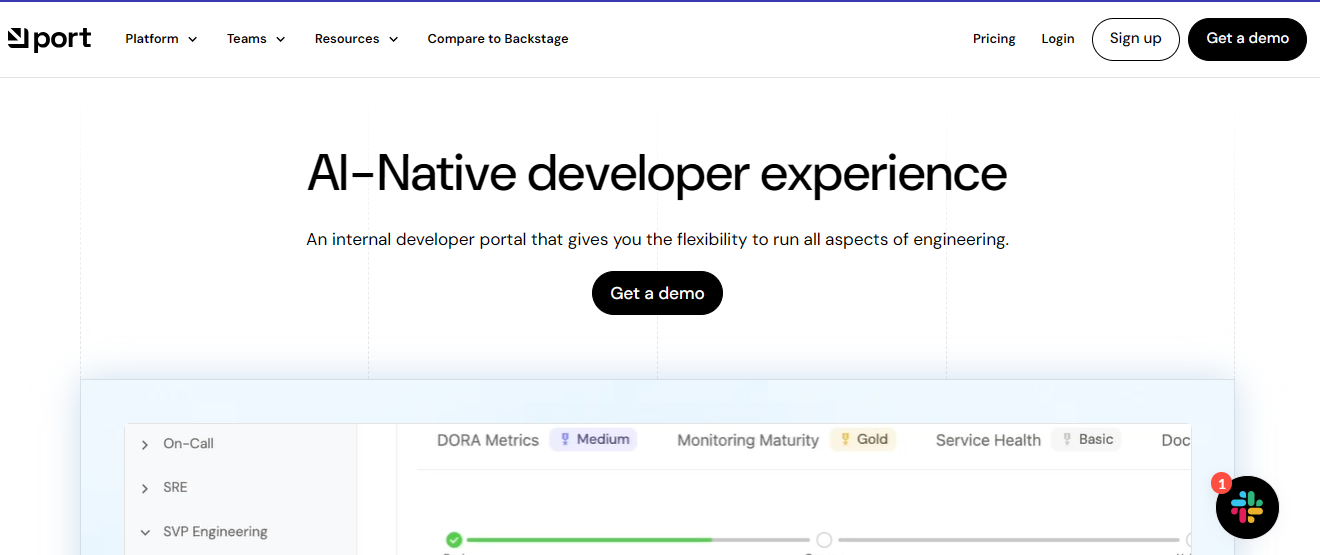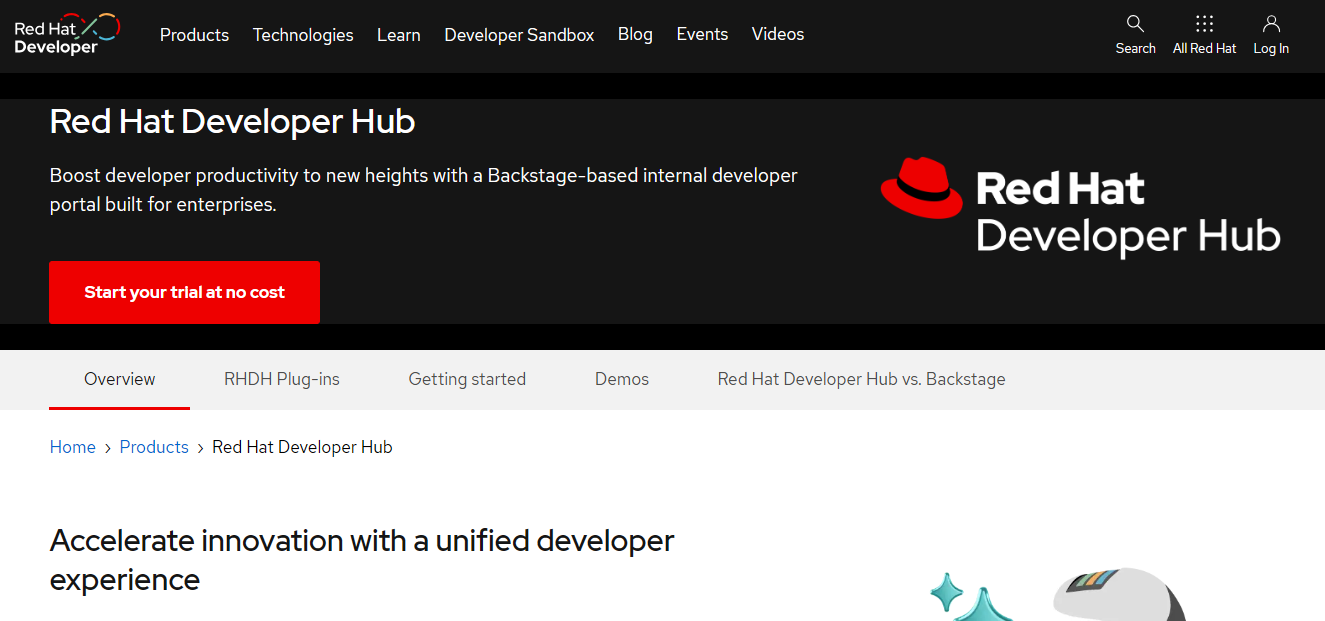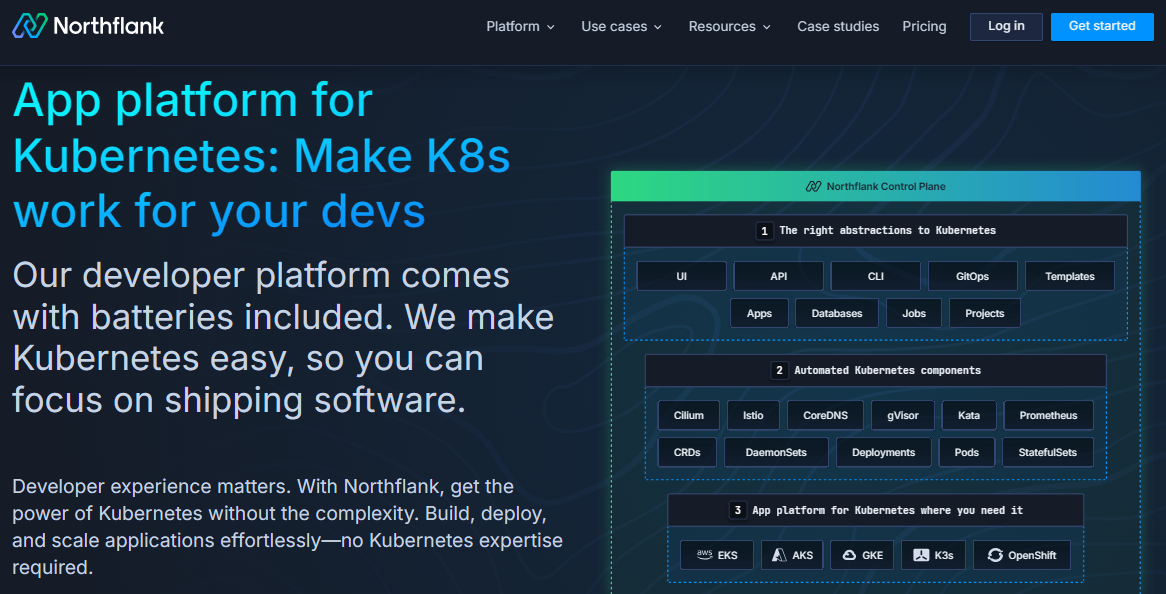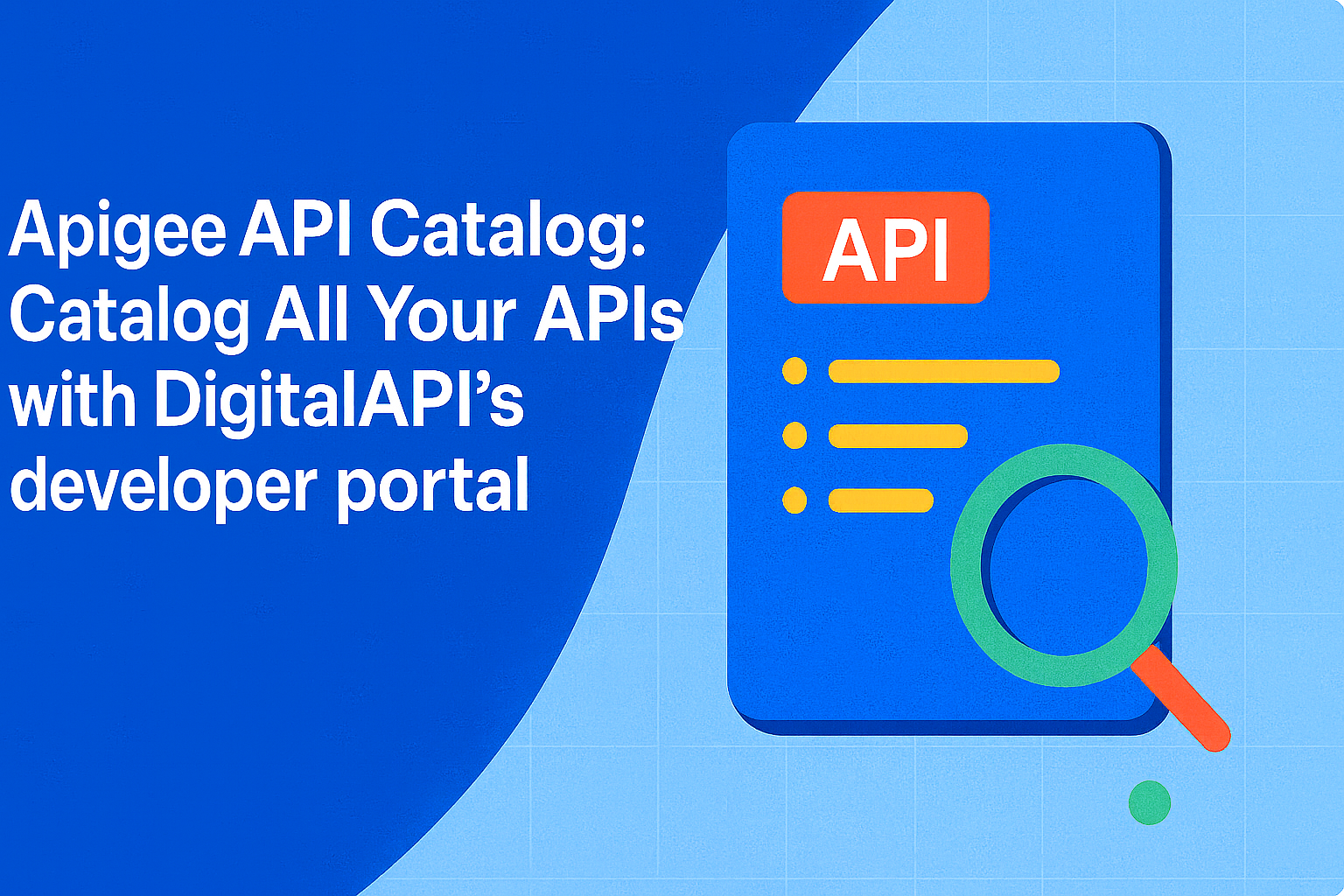Blog
Self-Serve Developer Experience in 2025: Strategies, Tools & Best Practices
Updated on:

Here is the bitter truth: Developers shouldn’t be spending more time filing tickets and waiting for access. Instead, they should be focusing on writing groundbreaking code. Because this isn’t just an annoyance; it’s a massive drain on innovation, morale, and your bottom line. Every minute lost to bureaucratic delays and dependency hell pushes projects further behind and frustrates them.
The escape from this costly cycle is a powerful self-service developer experience. By equipping developers with automated platforms and embedded guardrails, you can transform those frustrating delays into autonomous productivity.
This approach removes roadblocks and unlocks faster development, heightened job satisfaction, and a true competitive advantage. In this blog, we’ll explore what a self-serve developer experience really is, why it matters, the best tools for 2025, and how to measure its impact.
What is self-service developer experience?
Self‐service developer experience is a model where developers have direct access to the tools, platforms, and infrastructure needed to build, test, deploy, and monitor code without manual gatekeepers.
It involves providing automated platforms and processes, such as internal developer portals, that offer developers a simplified and controlled path to provision infrastructure, create environments, and use services. This approach reduces bottlenecks, accelerates delivery, and helps organizations adapt quickly.
Developer self-service and DevOps self-service overlap but differ in scope. For instance, developer self-service focuses on empowering application developers, giving them access to environments, tools, CI/CD pipelines, infrastructure provisioning, etc., so they can move independently.
On the other hand, DevOps self-service is broader. It refers to operations or platform-oriented teams providing automation, governance, and internal platforms so that both developers and DevOps engineers can operate with fewer manual workflows. DevOps self-service often includes developing and maintaining the self-service tools, ensuring compliance, reliability, and scaling across many teams.
Key benefits of a self-serve developer experience
Imagine a chef in a world-class kitchen. Instead of having every ingredient, pot, and pan in one place, they have to file a ticket and wait for a supplier to deliver a single onion. It sounds absurd, right? Yet, for years, this has been the reality for many development teams.
A self-serve developer experience flips this model entirely. It boosts speed, reduces reliance on operations teams, fosters innovation, and improves security & compliance. Developers can launch tools, features, or environments without waiting for approvals, freeing up Ops.
Here are the benefits of a self-service developer experience:
1. Faster development cycles
When developers have direct access to the tools, documentation, and infrastructure they need, they can move faster. Instead of waiting on approvals or support tickets, they can spin up environments, access APIs, or pull sample code instantly.
This means fewer blockers and more time spent writing and testing code. This results in shorter release cycles and a faster path from idea to production as teams can experiment, iterate, and ship features more frequently.
2. Reduced bottlenecks for Ops teams
Operations teams often act as gatekeepers, managing deployments, provisioning resources, and ensuring environments stay stable. While critical, these responsibilities can easily become bottlenecks if everything has to go through them.
A self-serve model removes much of this friction by automating repetitive tasks like creating sandbox environments or running CI/CD pipelines and handing developers the ability to do it themselves. Ops teams get to focus on higher-value work such as optimizing infrastructure, improving reliability, and strengthening security posture.
3. Increased innovation and autonomy
Giving developers more control fosters a culture of ownership. They can try out new services, experiment with different architectures, and solve problems creatively without waiting days for approval.
This autonomy encourages innovation because developers are empowered to make decisions and learn quickly from results. Teams become more engaged and motivated, knowing they can directly influence product outcomes.
4. Enhanced security and compliance
Contrary to the fear that more autonomy means less security, self-serve developer experiences often strengthen compliance. By embedding guardrails such as role-based access, automated security scans, and policy-as-code, organizations can consistently enforce standards. Developers work within a safe framework that reduces human error and keeps compliance aligned with regulations, without adding manual overhead.
What are the different types of developer self-service?
Developer self-service is all about empowering engineers to work faster and more independently by providing them with access to the necessary tools, infrastructure, and workflows, eliminating the need for manual approvals or intervention from operations teams.
Developer self-service spans several key areas, including infrastructure provisioning for on-demand cloud resources, API lifecycle management for seamless API discovery and integration, CI/CD pipeline automation to speed up builds and deployments, and environment previews and testing for instant feedback in production-like environments.
Together, these approaches cut delays, reduce manual work, and give developers the autonomy to ship better software faster.
Here is a summary table of the different types of developer experience:
Let’s explore them in depth:
1. Infrastructure provisioning
Provisioning infrastructure is one of the most time-consuming tasks for developers if done manually. Self-service infrastructure allows teams to spin up cloud resources (servers, databases, containers) on demand, using pre-approved templates and policies.
This reduces dependency on IT or DevOps teams and ensures consistency across environments. For example, with Terraform modules or Kubernetes Helm charts, developers can deploy what they need in minutes while still following security and compliance guardrails.
2. API lifecycle management and integration
Modern applications often rely on dozens of APIs. Self-service API management gives developers the ability to discover, consume, test, and even publish APIs in a controlled way.
This can include generating API keys, checking documentation, monitoring usage, and managing versioning without manual requests to another team. It accelerates integration work and reduces the risk of using outdated or unapproved APIs.
3. CI/CD pipeline automation
Continuous integration and delivery (CI/CD) pipelines are at the heart of modern software development. Self-service here means developers can trigger builds, run automated tests, and deploy code to staging or production environments without waiting on operations.
Automated pipelines improve consistency, reduce errors, and encourage frequent releases, keeping teams agile and responsive to change.
4. Environment previews and testing
Finally, self-service testing environments allow developers to create ephemeral, on-demand preview environments for every feature branch or pull request. This makes it easy to validate changes in a production-like setting, catch issues early, and share live previews with teammates or stakeholders for feedback. This approach improves collaboration and speeds up the release process.
How to Implement Developer Self-Service Step by Step
Rolling out developer self-service focuses on building an experience that empowers developers while keeping operations, security, and compliance in check. Start by identifying pain points to tackle bottlenecks, then centralize automation and infrastructure into a single platform for consistency.
From there, provide pre-configured templates to simplify workflows, set clear security and compliance guardrails to minimize risks, and offer comprehensive documentation and training so developers can confidently adopt and use the system.
Here is how to implement developer self-service:
1. Identify and address key developer pain points
Start by talking to your developers. What slows them down most? Is it provisioning servers, waiting for code reviews, or setting up test environments? Collect feedback from surveys, team retrospectives, and support tickets. When you focus on the most common bottlenecks first, you deliver quick wins that immediately improve productivity and build buy-in for the initiative.
2. Centralize automation and infrastructure into a platform
Scattered scripts and one-off tools can create confusion. Instead, bring everything into a single platform where developers can request infrastructure, trigger pipelines, and access shared services. Whether it’s a dedicated internal developer portal or a platform engineering solution, centralizing automation reduces cognitive load and ensures a consistent experience for everyone.
3. Provide pre-configured templates and resources
Self-service should feel simple and safe. Offer ready-to-use templates for common workloads—such as spinning up Kubernetes clusters, setting up a CI/CD pipeline, or deploying a database. These templates save time, enforce best practices, and prevent misconfigurations that could lead to costly outages later.
4. Define clear guardrails for security and compliance
Empowering developers doesn’t mean giving them unlimited freedom. Put policies in place to enforce security, access controls, and cost limits.
For example, you can restrict certain resources to specific environments or require automated security scans before deployments. Guardrails let developers move quickly without exposing the business to unnecessary risk.
5. Offer comprehensive documentation and training
Even the best tools fail without proper guidance. Create documentation that is easy to follow and keep it updated as workflows evolve. Pair this with onboarding sessions, short video tutorials, and office hours to help developers adopt the new platform confidently. Good training ensures self-service becomes a habit, not just an option.
Tools and platforms for a frictionless developer experience
Delivering a frictionless developer experience can be a nightmare without the right tools and platforms. Some of the best solutions for this role include Port.io, Spacelift, Red Hat Developer Hub (RHDH), Northflank (for Kubernetes use cases), and DigitalAPI.
Here is a summary table of the tools and platforms for enhancing developer experience:
Let’s explore them further.
1. DigitalAPI – enhancing API management and integration for self-service

While the previous platforms excel in general infrastructure and application deployment, the modern digital landscape is fundamentally built on APIs. They are the connective tissue between services, the product that companies deliver to partners, and the primary interface developers interact with.
This is where DigitalAPI distinguishes itself not just as another tool, but as the best overall platform for organizations whose lifeblood is API-driven innovation. It is specifically engineered to enhance every facet of the API lifecycle, making it the cornerstone of a superior, frictionless developer experience, both for internal teams and external consumers.
DigitalAPI moves far beyond traditional API management, which often focuses solely on gateways and traffic. It presents a holistic, integrated, and intuitive environment that empowers everyone involved, including API product managers, developers, and consumers.
How DigitalAPI revolutionizes the developer experience
- Unified API discovery and consumption: The heart of any API strategy is discoverability. DigitalAPI’s core strength is its powerful, customizable API developer portal. This isn't just a static documentation page; it's a dynamic, interactive catalog. Internal and external developers can easily discover available APIs, explore their documentation, and most importantly, test them live directly in the browser without writing a single line of code.
- Accelerated API design and development with Git integration: DigitalAPI deeply embraces modern development practices. It provides visual API design tools that allow architects and developers to design APIs using OpenAPI specifications intuitively.
- Seamless and automated API governance and security: With DigitalAPI, security and governance is baked directly into the workflow. The platform allows platform teams to define and enforce API style guides and governance rules automatically.
- Powerful analytics for product-led growth: To improve an API product, you must understand how it's used. The platform provides comprehensive API analytics, offering deep insights into usage patterns, performance metrics, and consumer behavior.
- Full lifecycle management and monetization: DigitalAPI provides tools to manage the entire API journey from design to retirement. It supports versioning and deprecation policies, which allow for smooth, non-breaking transitions for consumers. For companies that monetize their APIs, the platform includes built-in features to create usage plans, rate limits, and billing systems for transforming an API from an internal tool into a revenue-generating product.
Overall, while platforms like Port and Red Hat Developer Hub provide a broad foundation for developer self-service, Spacelift excels in IaC governance, and DigitalAPI offers an unparalleled depth of focus on the API lifecycle.
Book a demo here to see how DigitalAPI works!
2. Port.io

Port.io provides an internal developer portal/platform, designed to unify and simplify much of the messy complexity in developer workflows.
Features
- Blueprints and self-serve actions: Enables developers to use predefined workflows and templates to provision infrastructure, perform day-2 operations, etc., without needing deep infra knowledge or manual tickets.
- Software catalog: All services, tools, components, cloud resources, etc., are surfaced in one place.
- Role-based access control (RBAC), scorecards, and workflow automation: Let's platform or operations teams set up guardrails and visibility while letting developers move fast.
3. Spacelift

While many tools help you write Infrastructure as Code (IaC), Spacelift focuses on managing, securing, and automating the lifecycle of that code after it's written. It's a sophisticated control plane for Terraform, OpenTofu, Pulumi, CloudFormation, and Kubernetes.
Features
- Supports multiple IaC tools, so teams aren’t locked into one approach.
- Policy-as-code via Open Policy Agent (OPA): Allows setting rules around what infrastructure is allowed, what configurations are acceptable, etc., enforcing security/compliance automatically.
- Dependency workflows, resource/configuration visualization, drift detection, and scheduling tasks: All of these reduce the surprises, make what’s going on more visible, and allow developers to see the impact of infra changes.
4. Red Hat Developer Hub (RHDH)

Based on the open-source Backstage project, which was created by Spotify, Red Hat Developer Hub (RHDH) is a curated enterprise platform for building an internal developer portal. It provides a standardized, supported distribution of Backstage with additional plugins, security, and life-cycle management from Red Hat.
Features
- Unified dashboard of tools, documentation, environments, templates, etc., so everything developers need is in one place. That lowers friction and speeds up onboarding.
- Self-service guardrails and RBAC, audit logging, compliant workflows, plug-ins, and validated templates help developers to self-serve within boundaries.
- Turnkey portal solution: Rather than building your own internal portal from scratch, Red Hat offers a supported platform that reduces maintenance burden.
- Plug-in ecosystem/templates/extension: Many verified plug-ins, templates to jumpstart typical use cases, and the capacity to customize or extend functionality.
5. Northflank (for Kubernetes use cases)

Northflank is a powerful deployment platform that makes it incredibly simple to deploy and manage applications, from simple backend services to complex, multi-service applications with databases and caches. It brilliantly abstracts the complexity of Kubernetes without sacrificing its power.
Features
- Abstractions over Kubernetes: Simplified UI, CLI, API, GitOps support, templates, etc., so you don’t need to know every Kubernetes detail.
- Preview environments: For pull requests/commits, automatically spin up environments so developers can test and demo their changes without having to manually configure environments.
- Right-sized infrastructure: Auto-scaling, bin-packing, management of resources so you don’t waste cloud spend, and operations overhead is lower.
- Multi-cloud / bring your own cloud (BYOC): Works with AWS, GCP, Azure, etc., so flexibility isn’t sacrificed.
Best practices for measuring developer self-service success
To measure developer self-service success, start by setting clear goals, defining key metrics like DORA metrics (deployment frequency, lead time, change failure rate, MTTR), and tracking user adoption and satisfaction through surveys. Monitor operational data to identify productivity and quality gains, establish baselines to measure progress, and use these insights to make iterative improvements to the platform.
- Define clear goals: Clarify what success means for your self-service model. Then align objectives with business outcomes, whether it’s faster deployments, fewer failures, or better developer experience.
- Establish baselines: Benchmark current performance levels before changes. This allows you to measure the actual impact of self-service initiatives.
- Track key metrics: Measure DORA metrics to assess delivery performance. Track user adoption rates, Net Promoter Scores (NPS), and workflow usage to gauge satisfaction. Monitor operational data like time to first commit and cycle time for productivity insights.
- Monitor and analyze regularly: Continuously review metrics to detect trends, understand developer behavior, and identify bottlenecks or inefficiencies.
- Gather user feedback: Use surveys, interviews, and feedback loops to capture developer sentiment and needs, ensuring improvements remain user-centric.
- Iterate and improve: Leverage data and feedback to refine processes and enhance the self-service experience over time, driving continuous improvement.
Future trends in developer self-service
Developer self-service is rapidly evolving, driven by the need for faster innovation and streamlined developer workflows. This has led to trends such as AI-powered self-service portals, the rise of multi-cloud and hybrid DevOps platforms, and composable architecture for self-serve ecosystems.
Let’s get a closer look at these trends.
- AI-powered self-service portals: One major trend is AI-powered self-service portals. Instead of just static documentation, developers now expect intelligent systems that answer questions, suggest code snippets, and even generate APIs on demand. Platforms like DigitalAPI are leading the way by using AI to automate API design, testing, and deployment, which reduces friction for engineering teams and improves time-to-market.
- Rise of multi-cloud and hybrid DevOps platforms: Another big shift is the rise of multi-cloud and hybrid DevOps platforms. Organizations no longer want to be locked into a single cloud provider. Instead, they are adopting multi-cloud and hybrid setups where developers can seamlessly deploy workloads across AWS, Azure, GCP, or on-prem systems. Self-service portals will increasingly abstract away infrastructure complexity, enabling developers to spin up resources in any environment with minimal manual intervention.
- Composable architecture for self-serve ecosystems: Lastly, composable architecture for self-serve ecosystems is gaining traction. Rather than monolithic developer portals, companies are building modular, API-first systems that integrate with existing tools and workflows. This allows teams to compose their own workflows, such as choosing best-of-breed services for CI/CD, monitoring, and observability, creating a flexible, developer-centric experience. A prime example of this composable, API-first approach is DigitalAPI. It directly enables these trends by providing a unified gateway to manage and consume all API resources. Developers can seamlessly discover, access, and integrate internal and external APIs through a single, automated platform, which is essential for operating in a hybrid or multi-cloud environment.
How DigitalAPI elevates self-serve developer experiences
DigitalAPI elevates the self-serve developer experience by acting as a powerful, complementary layer atop standard API portals, bridging critical gaps to meet true enterprise needs. While traditional portals provide basic documentation, the platform automates the entire integration journey.
Its core strength lies in automating complex partner onboarding and API integrations, eliminating manual operational overhead. Developers and partners can discover, test, subscribe to, and integrate with APIs completely independently, dramatically accelerating time-to-market from weeks to mere hours.
Beyond access, DigitalAPI provides the robust monitoring and governance enterprises require. It offers deep visibility into API performance, usage metrics, and compliance, ensuring reliability and security without hindering the self-serve model. Furthermore, the platform is built for the future with AI-ready integrations, enabling advanced analytics, intelligent support, and automated workflow enhancements.
By combining effortless discovery with enterprise-grade control and cutting-edge AI capabilities, DigitalAPI transforms the developer portal from a static documentation library into a dynamic, secure, and intelligent integration hub, finally delivering a seamless self-serve experience that scales.
Ready to boost your developer experiences with a self-service portal? Talk to our experts here.
FAQs on self-service developer experience
1. What is a self-serve developer experience?
A self-serve developer experience is a framework that empowers developers to independently access tools, resources, and environments without relying on manual approvals or other teams. It provides automated, on-demand access to infrastructure, microservices, APIs, and documentation through an internal developer portal.
This model reduces bottlenecks, accelerates development velocity, and allows platform engineers to focus on building robust, secure underlying systems instead of handling routine tickets.
2. How does self-service improve DevOps workflows?
Self-service directly enhances DevOps by automating and streamlining core workflows. Developers can instantly provision environments, run deployments, and monitor services through automated platforms, reducing wait times and manual handoffs.
This aligns with DevOps principles by breaking down silos, empowering developers to own the full lifecycle, and increasing deployment frequency. The result is faster feedback loops, improved efficiency, and a more collaborative culture between development and operations.
3. Can DigitalAPI integrate with internal developer portals?
Yes, DigitalAPI can integrate with internal developer portals like Backstage. It can be registered as a component in the portal’s software catalog, providing developers with a single pane of glass to discover, consume, and manage APIs.
This integration automates documentation access, provides real-time status updates, and standardizes how APIs are secured and connected. It centralizes API governance and significantly improves the discoverability and usability of APIs across development teams.
4. How do you measure the success of a self-service strategy?
Success is measured through metrics that track efficiency, velocity, and satisfaction. Key performance indicators (KPIs) include reduced Lead Time for Changes (a DORA metric), decreased mean time to resolution (MTTR) for tickets, and a lower number of manual support requests.
Tracking platform adoption rates and conducting developer satisfaction surveys (e.g., via Net Promoter Score) are also crucial for assessing the strategy's effectiveness and identifying areas for improvement.
You’ve spent years battling your API problem. Give us 60 minutes to show you the solution.
.svg)







